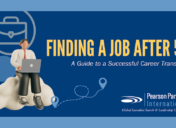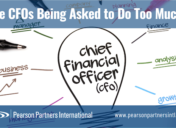Private Equity and the CEO: Building a Healthy Relationship

From L to R: Linda Wilkins, Shelly Stein, Suzy Kriscunas, Mike Bidwell, Chris Abraham, Tim Bacci, Keith Pearson
When a private equity (“PE”) firm acquires a company, it does so with aggressive growth in mind. Growth happens through change, and successful change depends upon a strong partnership between the PE operations team and the management of the company it backs.
Pearson Partners’ Q3 2015 Spotlight SeriesSM breakfast discussed how private equity firms and the management teams they work with build healthy partnerships. Our esteemed panel members included:
- Chris Abraham, Chief Executive Officer, Service King
- Tim Bacci, President and Chief Executive Officer, Daegis Inc.
- Mike Bidwell, President and Chief Executive Officer, The Dwyer Group
- Suzanne (Suzy) Kriscunas, Managing Partner, The Riverside Company
- Sheldon (Shelly) I. Stein, President and Chief Executive Officer, Glazer’s Distributors
- Moderator: Linda A. Wilkins, Founding Partner, Wilkins Finston Friedman Law Group LLP
The Right Talent to Win
During an acquisition, a private equity company often establishes “must-win battles” to achieve specific targets. Whether these involve new products, new geographies, acquisitions or other growth strategies, the PE firm must evaluate whether the existing management team has the background and skills to win those battles, or if fresh talent is required.
The role of the company founder may depend on the company’s future direction. Sometimes, the founder has no experience operating a larger company and may wish to transition out or switch to a new role. Whether the founder remains involved or moves on, a good private equity firm gives him or her confidence that loyal employees will be treated fairly, even if their skills are not a good match for the company’s growth strategy and they must be let go.
A successful PE partnership provides extensive support to help the management team succeed. When onboarding new executives, many PE firms will deploy a member of their own operating team—such as a finance executive or operating partner familiar with the company culture—to quickly bring the new leader up to speed and tackle high-priority projects. Adding independent, outside board members and advisors can also provide much-needed discipline and perspective.
Adapting to Change
Private equity firms use strict metrics to measure both human and financial performance within their portfolio companies. Disciplined planning and project tracking keeps management informed of progress against targets. This monitoring of company operations is often one of the biggest changes to which PE-backed companies must adapt.
But PE ownership also brings many benefits, chief among them access to resources and capital. Private equity companies have knowledge and experience with growing businesses, and can provide structure and teach smaller companies how to think like big companies and expand into new markets. They challenge their portfolio companies to think bigger and work differently. They serve as a sounding board and advisor for decision making. They make new connections. And, they secure access to funding that otherwise wouldn’t be available.
Many PE firms acquire companies as interim owners, with an exit strategy in mind from day one. Often, they plan to grow the company, then divest within four to seven years through private sale. Hold periods might extend up to 10 to 12 years, depending on market conditions and whether a company opts to go public.
Their challenge, in the meantime, is keeping talent on board as team members become fully vested. Internal equity programs can give management teams “skin in the game,” or incentives to grow the company under PE direction. People who are financially invested in the business through equity participation, and through rolling their own investment into the company, will have greater incentives to run the business like they own it—because they do. By investing their own money in the company, leaders also demonstrate their confidence in the PE partnership.
Both the PE firm and the company it backs have aligned interests in growing the business. But even with the best planning and staffing, not every private equity investment succeeds. Whether it’s due to a problem in the capital markets, a lack of due diligence or economic change, reward goes hand-in-hand with risk. When PE-backed businesses fail, the PE firm will typically seek to sell or transition the business and preserve jobs.
North Texas: Private Equity’s Second Home
Although Silicon Valley is still a hotbed of PE activity in the United States, many California companies reach a saturation point with costs and taxes, and begin to consider a move to a different geography. When they do, Texas is often at the top of their list. Texas’ highly attractive PE market, with business-friendly regulation and lower costs of doing business, is startup-heavy, resulting in greater investor involvement in portfolio companies’ day-to-day operations and managers who tend to take on greater risk.
Pearson Partners Spotlight SeriesSM Breakfast
Save the date for our next Spotlight SeriesSM breakfast scheduled for December 8. Look for details and invitations in November. Did you miss one of our Spotlight SeriesSM events? Check out summaries of past events.
Related Posts
- ← Pearson Partners in the Community – Tech Titans
- How Does Your Organization Cope with Uncertainty? →














